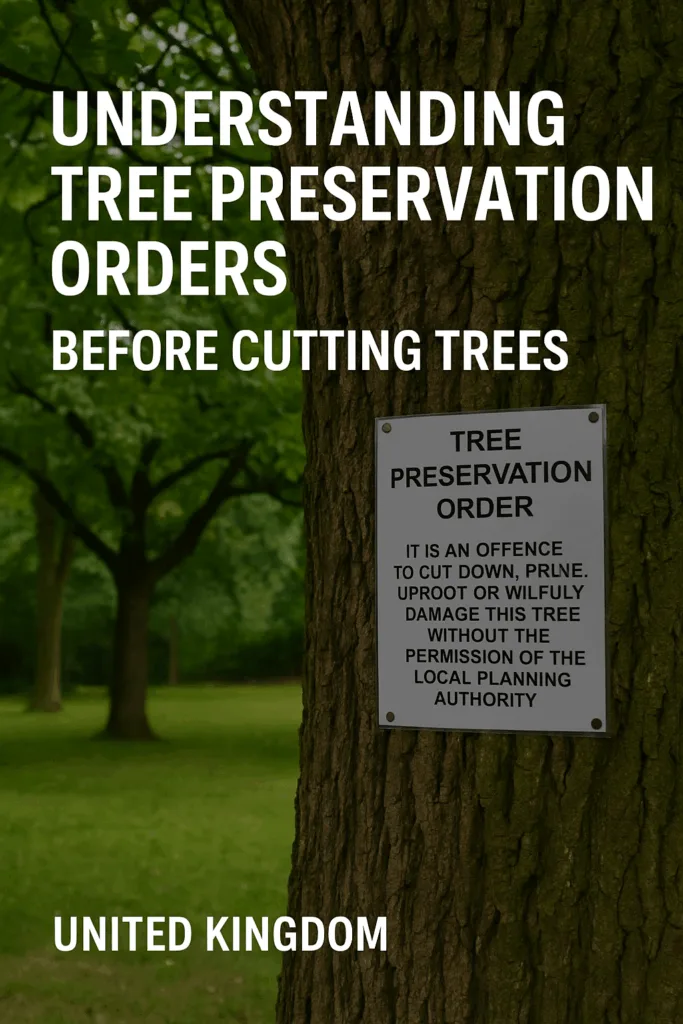Tree Preservation Orders (TPOs) play a critical role in conserving the United Kingdom’s natural beauty and biodiversity. Whether you’re a homeowner, a property developer, or a tree surgeon, understanding TPOs is essential before carrying out any tree cutting or maintenance. This comprehensive guide will delve into what Tree Preservation Orders are, how they work, and what you need to know before cutting or altering any protected trees.
What is a Tree Preservation Order (TPO)?
A Tree Preservation Order is a legal order made by a local planning authority (LPA) to protect specific trees, groups of trees, or woodlands in the interest of amenity. TPOs prohibit the following actions without the express permission of the LPA:
- Cutting down
- Topping
- Lopping
- Uprooting
- Wilful damage
- Wilful destruction
This order applies to all types of trees, regardless of species, provided they are not exempt due to conditions such as being dead, dangerous, or causing structural damage.
Why Are TPOs Issued?
TPOs are issued to preserve the character and environmental value of trees within a given area. The primary reasons include:
- Visual Amenity: Trees contribute to the beauty and character of a landscape.
- Environmental Importance: Trees support ecosystems and improve air quality.
- Historical or Cultural Significance: Some trees are protected due to their historical relevance.
- Urban Planning: Preventing unnecessary tree removal in urban developments.
Local authorities assess the importance of a tree based on its visibility, condition, and impact on the surroundings before issuing a TPO.
How to Find Out if a Tree Has a TPO
Before proceeding with any tree work, it is essential to check whether the tree in question is protected by a TPO. Here’s how you can find out:
- Contact Your Local Council: Most councils have a Tree Officer or planning department that handles TPO records.
- Use Online TPO Maps: Some councils provide interactive maps showing protected trees.
- Check Property Documentation: If you’ve recently bought a property, your solicitor should have informed you of any TPOs.
Failing to check can result in severe legal consequences, including fines.
The Legal Consequences of Breaching a TPO
Violating a TPO without proper consent is a serious offence. Penalties include:
- Fines up to £20,000 per offence in Magistrates’ Court
- Unlimited fines in the Crown Court
- Mandatory tree replacement if unlawfully removed
Ignorance of a TPO’s existence is not accepted as a valid defence.
How to Apply for Permission to Work on a Protected Tree
If you need to carry out work on a protected tree, you must submit a formal application to your local planning authority. The process includes:
- Filling Out an Application Form: Available from your local council’s website.
- Providing Details of the Tree and Proposed Work: Include the tree’s location, species, and the nature of the work.
- Supporting Evidence: Include photos, arborist reports, or reasons such as safety concerns.
- Awaiting the Decision: Councils usually respond within 8 weeks.
You must not commence any work until you receive written permission.
Exceptions to TPO Regulations
Certain situations allow tree work without formal permission:
- Dead or Dangerous Trees: Immediate work can be carried out but must be reported to the council.
- Nuisance Trees: If the tree causes direct damage (e.g., to foundations), partial works may be allowed.
- Obstruction: Trees causing public obstruction may be pruned with prior notice.
- Work Approved by Other Authorities: For example, if required under a statutory obligation.
Even in these cases, documentation and notification are critical.
TPOs and Planning Permission
If a tree with a TPO is located within a site where development is planned, special considerations apply:
- Planning Permission Overrides TPOs: If your development has planning approval and the tree work is necessary for the development, the TPO may not apply.
- Tree Surveys: Developers must provide tree impact assessments and tree protection plans.
- Condition of Consent: Councils may condition planning approval on the preservation or replacement of trees.
Consult a planning consultant or arborist early in the process.
Trees in Conservation Areas
While not the same as TPOs, trees in conservation areas are also protected:
- You must notify the council six weeks in advance of any tree work.
- The council may issue a TPO during this period.
- Failure to notify may result in the same penalties as breaching a TPO.
Always verify if your property is within a conservation area.
Tips for Compliance and Best Practices
- Hire Qualified Tree Surgeons: Ensure they are familiar with TPO laws.
- Keep Records: Maintain documentation of all communications and permissions.
- Use Professional Arborist Reports: These can support your application and show due diligence.
- Plan Ahead: Since permissions can take up to 8 weeks, factor this into your project timeline.
- Regular Tree Inspections: Especially for trees close to structures or pathways.
Conclusion
Tree Preservation Orders are vital tools for protecting the UK’s natural heritage. Before undertaking any tree cutting or alteration, it’s essential to verify whether a TPO is in place and understand your legal responsibilities. By following the proper channels and engaging professionals, you can ensure compliance, avoid penalties, and contribute to preserving the environment.
If you are ever unsure, it’s always best to consult your local authority or a certified arborist before proceeding. Protecting trees isn’t just a legal matter—it’s a community responsibility.
